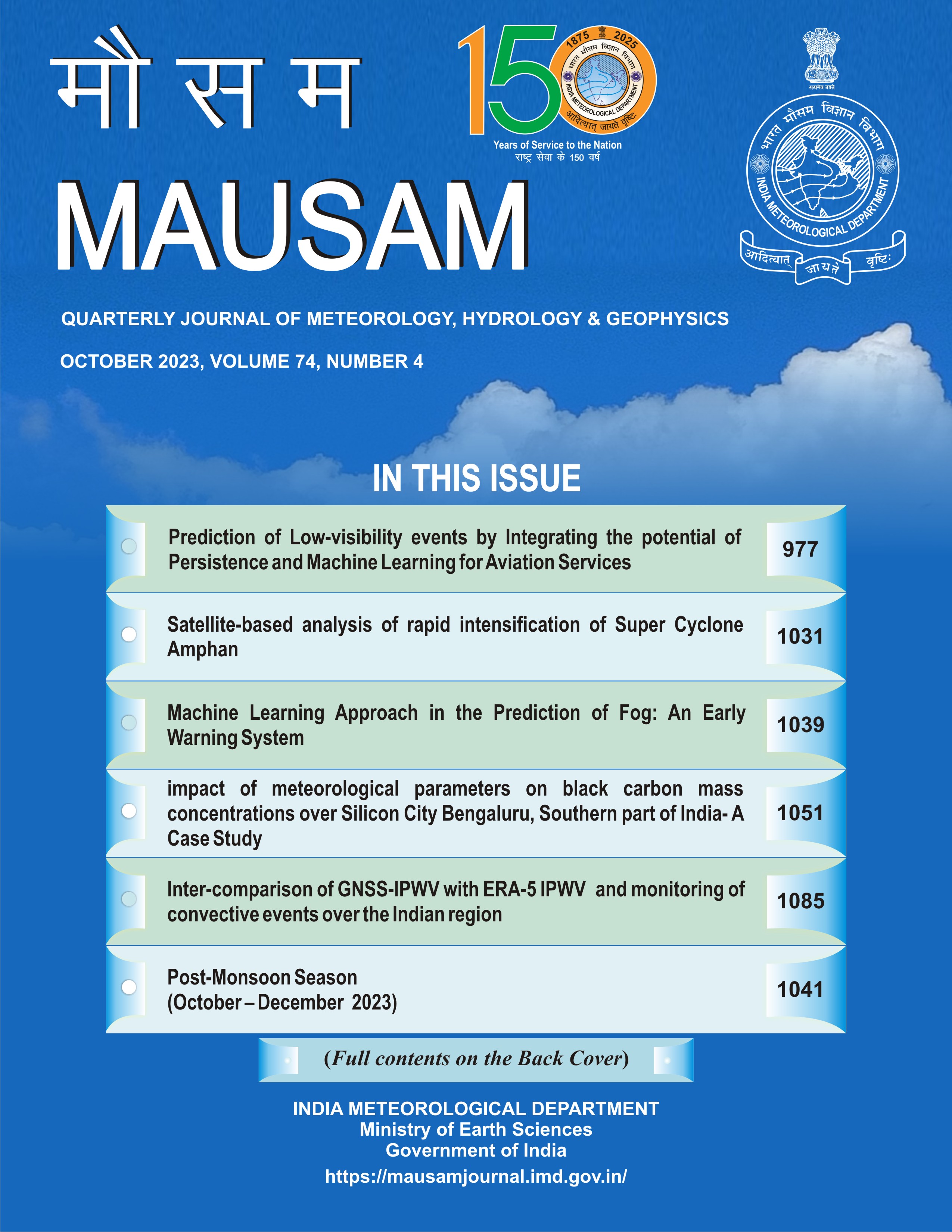Impact of meteorological parameters on black carbon mass concentrations over Silicon City “ Bengaluru, Southern part of India” – A Case Study
DOI:
https://doi.org/10.54302/mausam.v75i4.6460Abstract
In the context of Bengaluru, the impact of black carbon (BC) aerosols on regional climate dynamics emerges as a crucial area of investigation. Due to the lack of high-resolution BC data, it was collected at 5 different locations in Bengaluru, Karnataka, from January 2019 to December 2019. The mean mass concentration of BC was 5.91 microg m-3, whereas the higher mass concentration of BC was 7.71 microg m-3 over the city railway station and the lower (3.69 microg m-3) was in Jayanagara. The contribution of BC in higher-traffic and industrial locations was approximately 41% higher than the residential locations, which indicates a large fraction of soot particles are from anthropogenic activities mainly from fossil fuel combustion. The seasonal concentrations of BC have also exhibited a large variability, with the highest sequence in magnitude during the winter season (9 microg m-3) followed by the summer (6.3 microg m-3), post-monsoon (5.8 microg m-3) and monsoon (3.4 microg m-3) seasons during the study period. The concentrations of BC during the monsoon season were very low as compared to the winter season due to the impact of the washout effect. The BC was negatively significantly correlated (-0.70) with rainfall indicating the washout effect, however, during the winter season, it was due to impact of boundary layer condition. Overall (annually) the mean concentrations of BC have increased by around 55% within five years over the urban region, which indicates the impact of man-made activities. The higher mass concentration of BC over Bangalore in the southern part of India, indicates serious implications for the regional climate that need to be investigated and mitigated. Finally, the study suggests that immediate action is required to mitigate the emission of BC into the urban environment in the southern part of India.
Downloads
Published
How to Cite
Issue
Section
License
Copyright (c) 2024 MAUSAM

This work is licensed under a Creative Commons Attribution-NonCommercial 4.0 International License.
All articles published by MAUSAM are licensed under the Creative Commons Attribution 4.0 International License. This permits anyone.
Anyone is free:
- To Share - to copy, distribute and transmit the work
- To Remix - to adapt the work.
Under the following conditions:
- Share - copy and redistribute the material in any medium or format
- Adapt - remix, transform, and build upon the material for any purpose, even
commercially.



